Are there any similarities between the bloody war in Game of Thrones (GoT) and modern conflicts? The battle fields are certainly quite different, and dragons have very little to do with today’s conflicts (although they may allude to weapons of mass destruction). However, if we look beyond the fighting and fantasy, and study the logic of where and when violence and conflict occur, there are a surprising number of similarities.
As a conflict researcher, I find GoT fascinating. I wanted to see if I could use the series to shed light on the logic of conflict and violence, to use it as a tool to help people comprehend conflict patterns and theories. I compare the logic of violence – why do we see these types of conflicts? Why do they happen?
If people can understand a series as complex and convoluted as GoT, with myriad shifting alliances and a staggering cast of characters (or number of actors, both state and non-state), then they can understand conflict patterns today.
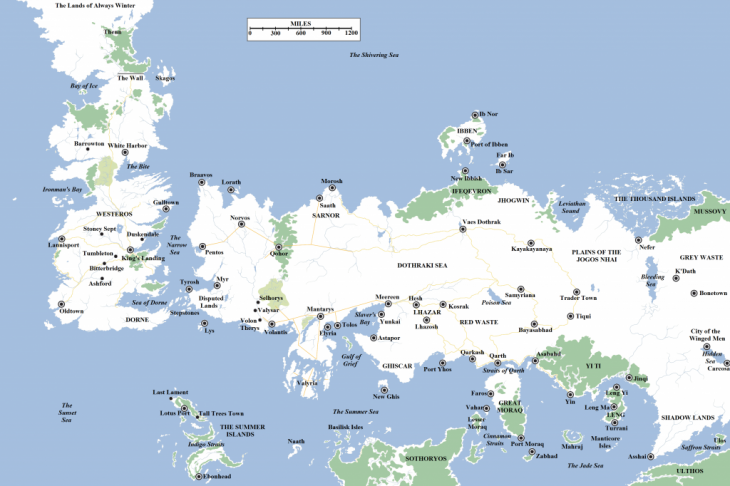
Figure 1: The world of Game of Thrones. Source: woiaf.westeros.org
To start though, in order to be able to compare anything we first need to make sure we are comparing the same things. The majority of conflicts in the world today are civil wars (see Figure 2), therefore to make the best possible comparison I looked at the War of the 5 Kings (W5K), which starts after King Robert Baratheon’s death and is the core conflicts in the first seasons of GoT.
Syria, the Philippines, Westeros?
Political theorist and philosopher Edmund Burke said, “Civil wars strike deepest of all into the manners of the people. They vitiate their politics; they corrupt their morals; they even pervert the natural taste of equity and justice.”
In our research on civil conflict at PRIO we use the Uppsala Conflict Data Program (UCDP) definition of conflict: “a contested incompatibility that concerns government and/or territory where the use of armed force between two parties, of which at least one is the government of a state, results in at least 25 battle-related deaths in a calendar year.”
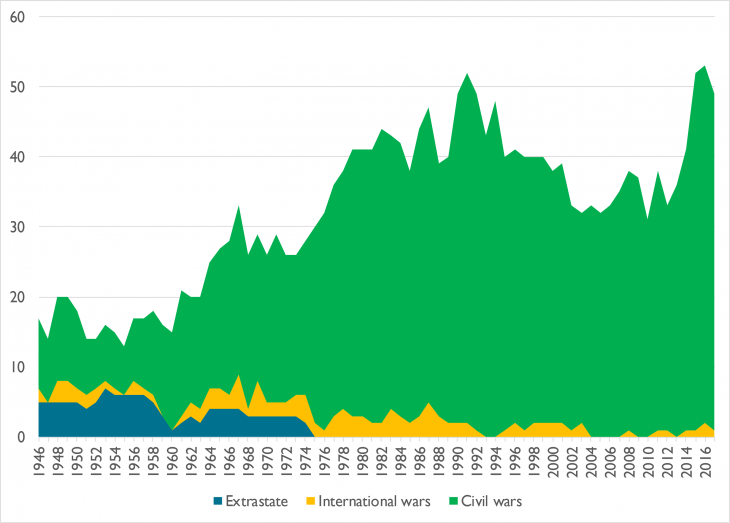
Figure 2: Development of conflict over time.
But how is this reflected in Game of Thrones? First of all, a civil war is an internal conflict within one country. The Seven Kingdoms includes the main parts of Westeros, but not all of it (see Figure 1). The territory north of the wall where the Wildlings or the Free Folk live is not a part of the sovereign state which constitutes the Seven Kingdoms. Hence the Battle of Castle Black between the Night Watch and Free Folk lead by Mance Rayder – The-King-Beyond-the-Wall – should not be seen as part of the W5K civil war – it is in fact an international war. That’s a rare phenomenon in GoT as well as in the real world (see the orange area in Figure 2).
The state is clearly whoever sits on the Iron Throne and his or her family. At the start of the W5K this is King Joffrey Baratheon who has taken the place as king after his father. However, as we know, King Joffrey is not a Baratheon, but the son of Cersei and Jamie Lannister. Thus, in my analysis any attack directly toward the Iron Throne or the Lannisters should be considered a civil war event.
In the outset of the W5K there are three actors (rebels) challenging the Iron Throne:
Stannis Baratheon of Dragonstone – on the claim that he is the true heir to the throne as Robert’s eldest brother.
Renly Baratheon of Storm’s End – also Roberts’s brother but younger than Stannis, nonetheless claiming he will be a better king than Stannis.
Robb Stark – Who is raising an army in the north to revenge the execution of this his father Ned Stark, and is soon proclaimed “The King of the North” by his banner men.
Thus, any battles involving any of these three actors (including their banner men, such as the Tully for Stark alliance) should be considered part of a civil war. While Renly was killed by his own brother before he was able to make any military advances towards the throne, both Stannis and Robb were able to hurt the Iron Throne’s army considerably.
While they all are challenging the state (i.e the Iron Throne), they have different motives. While the Baratheon brothers want to take the Iron Throne and rule the Seven Kingdoms, Robb Stark does not seem to be interested in ruling all the Seven Kingdoms but wants to rule the North. In our research we distinguish between these two types of conflict: the two first are governmental conflicts (challenging the rule of the state), while the third is territorial – when a group seeks to secede or get more autonomy over their own territory.
Modern day war games
Having both territorial and governmental conflict within one country at the same time is not uncommon in today’s conflict either. For example, in the Philippines there are two main conflicts.
First a governmental conflict between the Philippine government and Communist Part of the Philippines (CPP) (represented by red dots in Figure 3), a communist group trying to overthrow “the reactionary bourgeois regime”. Second, a territorial conflict on the Island of Mindanao driven by Islamic secessionist groups (blue dots). Territorial conflict is often (but not always) restricted to the territorial area, while the governmental conflict is wider spread.
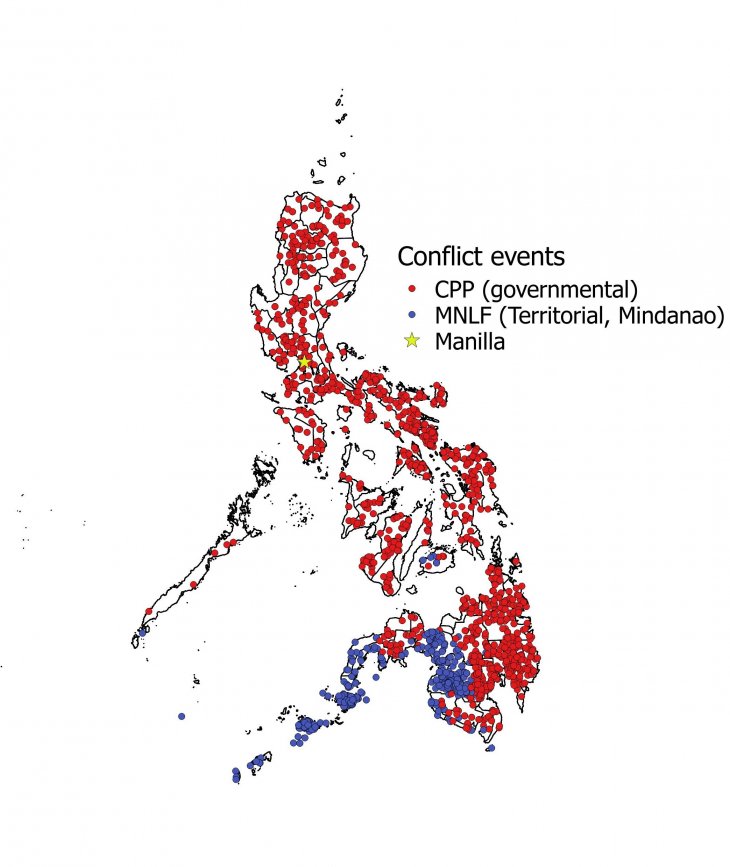
Figure 3: Conflict events in the Philippines.
Cederman et al. 2015 argue that territorial power sharing (such as the Starks being the Warden of the North) has a conflict preventing effect. However, this effect is not so clear when there has been a conflict between the incumbent government and the group. This is also reflected in GoT in the change of the relationship between the Starks and the Iron Throne when King Joffrey takes over.
The Iron Islands – no (wo)man’s land
Attentive GoT fans have of course noticed that I have only talked about four out of the five kings of the W5K. The last actor is of course King Balon Greyjoy of the Iron Islands, and his heirs Yara and Theon. King Balon is not fighting the Iron Throne directly but he is engaged in other forms of violence and conflict that occur during civil wars.
Sociologist Max Weber argues that “a state is as an entity that successfully claims a monopoly of the legitimate use of physical force within a given territory”. However, when the state is challenged it often loses control over the monopoly of violence as they are occupied by fighting or are suffering great loses, which is evidently happening for the Lannisters in GoT. King Balon Grey claims “The wolf pup has gone south with the entirety of the Northern army at his back. While he’s tangling with the lion in the Westerlands, the North is ripe for the taking”. In his book from 2011, Thomas Risse refers to these pockets of lack of control as areas of limited statehood, where the central government are too weak to enforce rules and do not control the monopoly over the means of violence. In this vacuum we often see other types of violence.
A very good example of this in GoT is when Theon comes home to the Iron Islands and claims loyalty to his father (rather than to Robb Stark). However, instead of being welcomed home as the long-lost son he is given the Sea Bitch (one of his father’s ships, while his sister Yara gets the rest of the fleet) to “go and raid some fisher villages”. However, as we know Theon did not go raiding some fisher villages, he went straight to seize Winterfell from the Starks to impress his father. This was the start of a long line of conflict events in the same period as the W5K was ongoing, where the state, i.e the Lannisters, were not involved:
The fall of Winterfell – Theon Greyjoy seizes Winterfell from Bran and Rickon Stark.
The Sack of Winterfell – Ramsey Bolton overruns Theon Greyjoy’s small force and takes Theon Greyjoy captive.
The Battle of the Bastards – Jon Snow and Sansa Stark reclaim Winterfell in one of the largest battles in GoT.
In our research this is what we call non-state conflict – conflict fought between organized groups neither of which is the state. This could be fighting between well-organized rebel groups to less organized communal violence between groups based on a common identity such as ethnicity, tribe or chiefdom.
Public war, “private” conflict
This mix of state-based and non-state base conflicts is very common in today’s conflicts as well, which makes the conflicts complex and more difficult to understand and solve. If we look at the Syrian conflict, we are really talking about a range of conflicts between the various insurgent groups as well as the collective fight against the Syrian government.
Figure 5 shows the number of state-based(blue) and non-state conflicts (green) in Syria, as well as the respective battle deaths for each category. To the left we see the same graph for W5K (be aware that to code battle deaths in GoT I had to apply a special coding rule: You can only die once. Thus, there are no White Walkers represented in the data).
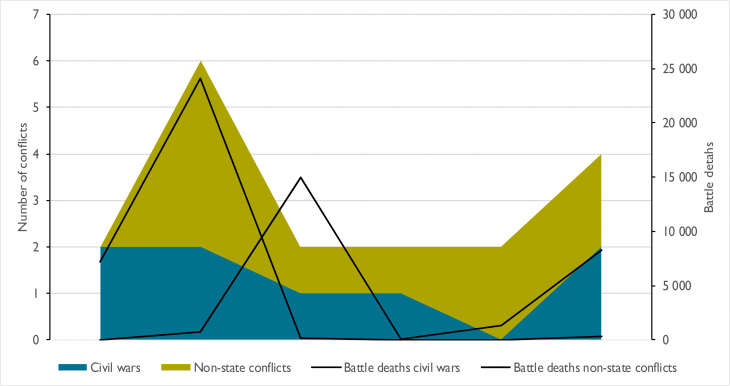
Figure 4: Conflicts in Westeros.
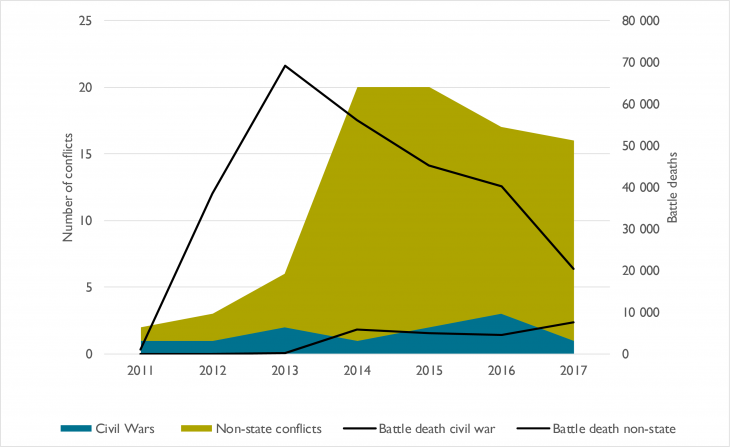
Figure 5: Conflict in Syria.
There are a few important similarities between these two graphs. First of all, the number of non-state conflicts exceeds state-based conflict. Second, the number killed in state-base conflicts exceeds the number killed in non-state conflicts, and finally we see that the number of battled deaths increases toward the end of the wars. Thus, it seems that W5K has a similarly trajectory as the Syrian conflict.
In his book The Logic of Violence in Civil War Stathis Kalyvas states in a very Hobbesian way that, “Civil war provides a mere pretext, a costume in which to clothe the pursuit of private conflict”. The massacre during the Red Wedding fits well into this description: it is violence that on the surface does not have a political aspect, since it is the revenge of Lord Walder Frey on Robb Stark for breaking his promise to marry one of his daughters.
However, Kalyvas further states, “Civil war is also a process that connects the collective actors’ quest for local advantages. Violence can also be a selective benefit that produces local mobilization via alliances”. What is not so clear in the series is that the Red Wedding was orchestrated by Tywin Lannister, conspiring with Roose Bolton and Walder Frey to break the northern army. After the Red Wedding it becomes clear that Roose Bolton has betrayed the Starks and becomes the new Warden of the North. However, this clearly shows that the violence in GoT is not just rampant bloodshed to entertain the viewer, but reflects a complex political landscape, for which those who are unable to maneuver within will pay dearly. This is shown through the fate of characters like Robb Stark, who chose love over politics.
Conflict or crime?
The battle deaths in Figures 4 and 5 reflect for the most part knights and soldiers in GoT. However, as we all know there is also a high number of civilians being killed by the conflict actors. As researchers we refer to this as one-sided violence i.e. violence conducted by the state or a non-state actor (i.e. an organized group) toward civilians. In some cases, it is clear that the killing of civilians is part of the conflict – such as the massacre in Kings Landing. There was also notably a riot among the ordinary citizens that was ignited by frustration over lack of food due to the war (On a side note: this example speaks directly to the debate on the food security and violence nexus. PRIO researcher Ida Rudolfsen claims that the link from conflict to food insecurity is more powerful than the link from food insecurity to conflict). When the King and the royal procession walks through the streets of starving citizens one person throws a cow pie at King Joffrey and calls him bastard, he gets angry and shouts “Just kill them. Kill them all”. During the incident the Kingsguard kills several dozen citizens.
While the riot in Kings Landing is clearly linked to the war, violence conducted by non-state groups is less clear linked to the civil war, such as the Brotherhood Without Banners. Their leader Lord Beric Dondarrion claims “That’s what we are: Ghosts. Waiting for you in the dark. You can’t see us, but we see you. No matter whose cloak you wear: Lannister, Stark, Baratheon, you prey on the weak, the Brotherhood Without Banners will hunt you down”.
The Brotherhood’s activities become a grey zone between conflict and crime; while they take part in the conflict in a Robin Hood-ish way they are also conducting pure criminal activities, what we would define as homicides rather than one-sided violence. We see much of the same kind of activity happening in Mexico today. While Mexico is not a country in conflict, more than 20,000 people are killed in homicides every year, and many of these are linked to drug cartels, which in many ways are organized groups. This type of violence is difficult to define and often falls outside of the conflict definition.
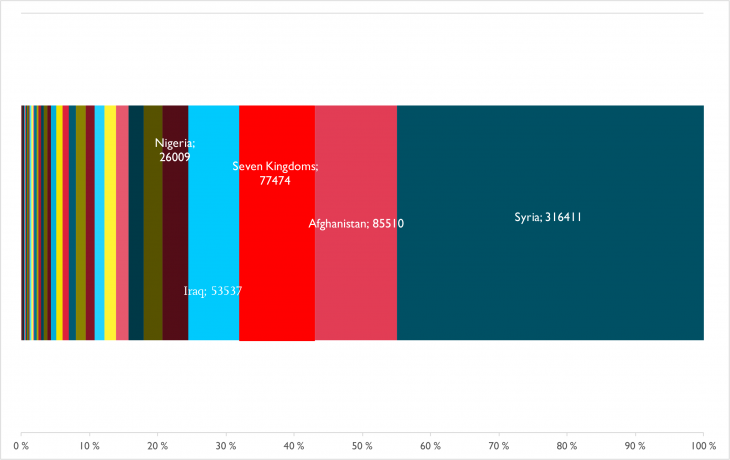
Figure 6: Battle deaths 2011-2017 and the Seven Kingdoms.
The reality in fantasy
To make a proper comparison between GoT and reality, I have compared the battle related deaths in the four different categories discussed in this article: International wars, civil wars, non-state conflict and one-side violence. Since the W5K lasted for six years, I compared it to the violence in the modern world between 2012 and 2017.
Figure 6 suggests that over this six-year period Syria has by far the largest number of battle deaths but the Seven Kingdoms fall into third place, approximately the same size as Iraq and Afghanistan in this period. This suggests that W5K is not out of proportion compared to today’s conflict; in fact it is rather comparable.
Is reality reflected in Game of Thrones? The logic of violence in the fictional universe of Westeros is certainly easily compared to today’s conflicts. The War of the 5 Kings is similar to many civil wars we see today, perhaps saying something about humans’ affinity for violence in entertainment – but I’ll leave that to the anthropologists.
[…] Source link […]